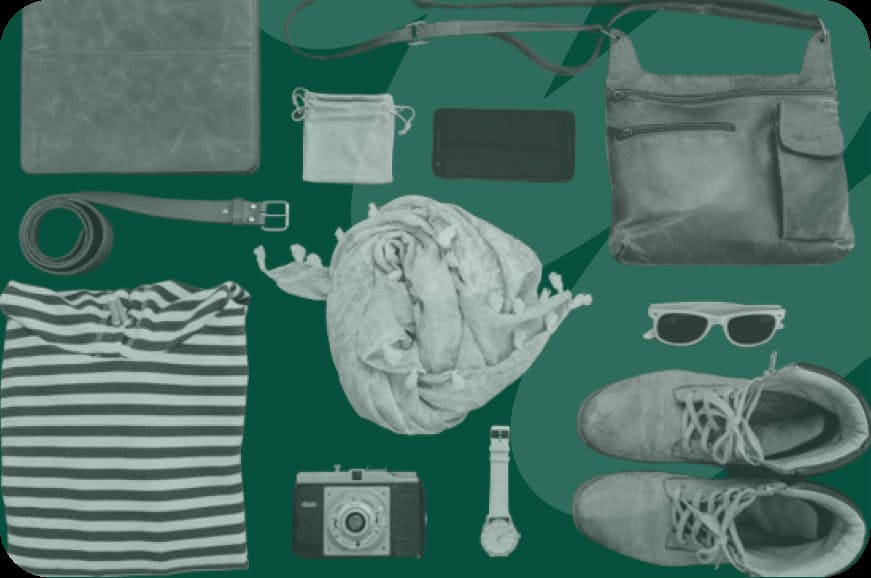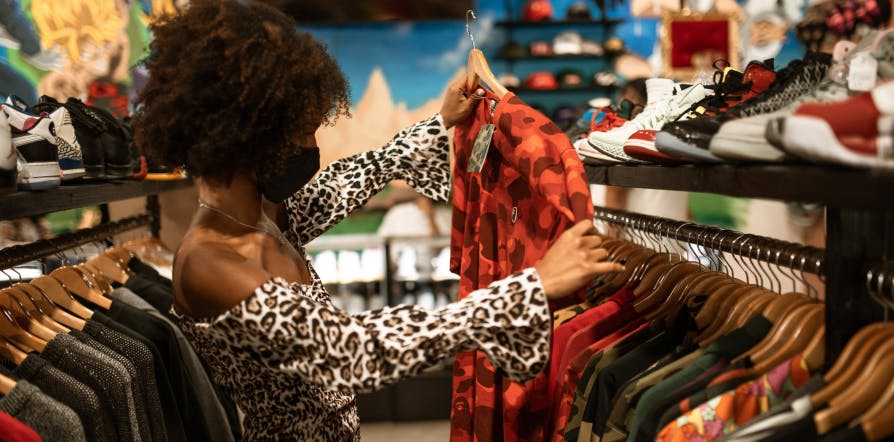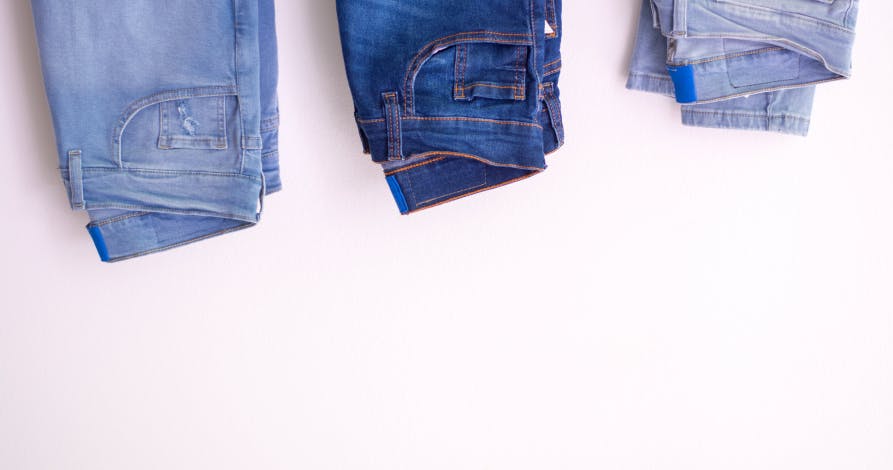ESG / CSR
Industries
5 Tips to Recognize and Buy Ethical Clothing Brands



In 2023, it’s becoming more difficult to decipher which fashion companies can truly be deemed as ethical clothing brands. How can consumers become more cognizant of the environmental impact of clothing manufacturers, and alter their fashion choices and purchases to be more sustainable?
Here are our 5 tips to recognize which ethical clothing brands are truly eco-friendly.
What are ethical clothing brands?
Sustainability is becoming trendy, and even when it comes to fashion – in 2023. With so many companies striving to achieve “eco-friendly” status to lure in new customers and investors, it can be challenging to determine what really makes for an ethical clothing brand.
An ethical clothing brand is a clothing company that will make their best effort to reduce their negative environmental impact, and keep the planet, people, and wildlife in mind throughout their entire production process. Examples of actions taken by ethical clothing brands include ensuring safe and equal working rights for employees, a fair supply chain, aiming to reduce their greenhouse gas emissions, and seeking the source of eco-friendly materials to manufacture their clothing.

Why is it important to recognize ethical clothing brands?
Climate change is more of a threat than ever before, and with the Intergovernmental Panel on Climate Change recently revealing that the root cause of rising global temperatures is due to extensive human activity and mass production – it is clear that it is up to society to make the daily changes necessary in their lives to combat climate change. One of the easiest ways to do that is by altering our daily habits, such as the clothes we wear – hence, the newfound interest and importance of ethical clothing brands.
Clothing, specifically fast fashion, has left a massive carbon footprint across the globe following the industrial revolution and social media encouraging finite fashion trends. Fast fashion encourages excessive consumption, water waste, and the use of materials such as polyester and synthetic fibers which can intoxicate natural water resources like streams and rivers.
The good news is that both consumers and clothing companies are now aware of the danger of fast fashion, and many are seeking to rectify their previous fashion choices. However, the problem is that many companies (not just companies claiming to be ethical clothing brands, but across multiple industries) are greenwashing customers into thinking they are more eco-friendly than they actually are.
Is there a way to determine the real ethical clothing brands from the fake ones?

5 tips to recognize ethical clothing brands
No customer has the time to do an in-depth search of a brand when skimming the price tag of a sweater they’re interested in – making it difficult to determine if the fashion item of choice they wish to purchase is an ethical clothing brand.
However, there are ways to determine if a company is truly an ethical clothing brand without scouring the internet for hours. Here are our top five tips to recognize if a clothing item belongs to an ethical clothing brand.
Understand the Difference Between Fast and Slow Fashion
First off, it’s important to understand the difference between fast fashion and slow fashion.
Fast fashion refers to mass produced, affordable clothing that aim to imitate the latest fashion trends while they are still in style. Seeing as everything about fast fashion is done at an unprecedented speed, it doesn’t usually keep the environment in mind – such as contributing to excessive emissions through sped-up production or by using cheap materials that aren’t biodegradable.
Slow fashion, on the other hand, is the exact opposite of fast fashion – as it attempts to produce clothing with minimal production, resilient supply chains, and avoiding the idea of quantity over quality. Slow fashion is also made with respect for employees and wildlife in mind.
Common fast fashion brands include Forever 21, H&M, and Zara – meaning buying something from one of these companies is unlikely to be considered a slow fashion item.
Read the Ethical Clothing Brand’s Materials
If you’re standing in the store trying to find the simplest way to determine if a company is an ethical clothing brand, look no further than the sizing label – where details regarding the clothing item’s materials should be listed.
Materials such as polyester, which are found in over half of clothing items on the shelves of clothing stores today, can take over two centuries to fully break down – making them non-biodegradable. Any clothing item that can’t be easily recycled is most definitely not being sold by an ethical clothing brand.
On the other hand, clothing materials such as linen, tencel, and hemp are all sustainable materials that many ethical clothing brands will strive to use. It is important to note while cotton is more eco-friendly than polyester – the labor process for cotton is subject to water waste, meaning truly ethical clothing brands will do their best to mitigate the use of cotton.

Look Up the Working Conditions of the Ethical Clothing Brand
How a company treats their workers will reveal a lot of their other environmental values.
The fashion industry has accumulated a bad record for their poor conditions for workers, such as working them longer than legal limits allow for or subjecting them to hazardous working conditions. Companies that aim to rectify this taboo and stand against the status quo might be deemed as ethical clothing brands.
Thankfully, there is legislation in the works that can help avoid such abysmal working conditions for those employed in the textile industry, such as the FABRIC Act and the Fashion Worker’s Act.
Determine if the Packaging is Sustainable
To the surprise of many, sustainable packaging is more important than you might think when trying to reduce the carbon footprint of a company. The Environmental Protection Agency has stated that packaging can account for up to a third of the waste created by a product. Therefore, ethical clothing brands will be cognizant of the environmental impact of plastic packaging – and will more than likely deliver your new clothing items with biodegradable packaging.
Corporate Social Responsibility
Corporate social responsibility, or CSR, is the measure of how sustainable and ethical a company is – making this a great, quick way to determine if a company can be considered an ethical clothing brand. In fact, many of the company's statements regarding corporate social responsibility will include details about the efforts to reduce their environmental impact. However, it is important to note that these statements will not always reflect in the company’s actions – so it is important to pay attention to the previously mentioned tips to decipher if a company is truly an ethical clothing brand.
A few other ways to determine if a company can be considered an ethical clothing brand include looking how many environmental certifications they have received, their ESG score, or their efforts towards sustainable investments.
5 examples of ethical clothing brands
If these tips still aren’t enough to understand the difference between ethical clothing brands and typical fast fashion companies – here are five examples of ethical clothing brands.
Patagonia
Patagonia is one of the best choices for consumers seeking to purchase from ethical clothing brands, as this company in the textile industry makes the utmost effort to reduce their environmental impact and promote the idea of quality over quantity. For instance, Patagonia has been committed to using organic cotton since 1996 in order to avoid the use of toxic pesticides. This ethical clothing brand has also encouraged the growth and use of organic cotton elsewhere around the world, such as by testing out “Regenerative Organic” cotton growing practices in India.
In addition to these environmental efforts, Patagonia strives to use recyclable materials to avoid textile waste, and offers customers free-repairs for all clothing items purchased from Patagonia.
VEJA
VEJA is a shoe company in Paris that aims to create sneakers with the influences of social, economic, and ecological fairness. This innovative, ethical shoe brand accomplishes this by relying on word-of-mouth for people to find their shoes instead of relying on traditional ads – which leaves them with the additional funds necessary to invest in eco-friendly materials like organic cotton and vegan leather. Rest assured, this shoe is well-known in Paris – and clearly doesn’t need a 30-second commercial in between popular streaming shoes to keep its revenue up.
Levi’s
Remember when we said that one of the most surefire ways to separate an ethical clothing brand from one guilty of greenwashing their customers is to read the label and discover which materials were used to produce the clothing in the first place?
Levi’s, an ethical clothing brand well known for their jeans, is a perfect example of this tactic proving useful when shopping for sustainable fashion. This popular denim brand is dedicated to sustainably sourcing their cotton, avoiding excessive water consumption, and promoting recycling whenever possible.
In addition to organic cotton, remember that materials such as wild sick, hemp, linen, and lyocell can also be signs of ethical clothing brands worthy of purchasing from.

Parker Clay
This American based ethical clothing brand is determined to create an equal future by assisting to improve the lives and communities in developing countries – such as in Ethiopia. Parker Clay has accomplished this by partnering with third parties like the Ellilta Women at Risk program in order to advocate for adequate pay and fair working conditions for women. This ethical clothing brand is not only a pro at dedicating themselves to an improved society, but they also seek to implement traditional Ethiopian materials and styles in their clothing and accessory releases.
All in all, fashion companies that are whole-heartedly dedicated to improving society can usually be deemed as ethical clothing brands.
Threads 4 Thought
This ethical clothing brand uses sustainable materials in novel ways, such as by using the harvest limbs of beach trees – which helps prevent the need for other climate-change rectifying acts such as reforestation due to deforestation itself. Companies like Threads 4 Thought allow for the preservation of trees and for materials such as yarn to be reused.
Ethical clothing brands are on the rise, but remember – there are plenty of fashion brands that will claim to be sustainable when in reality, they aren’t doing the environment too many favors. It is important to read the label for the materials used during production, look up the working conditions of employees, examine if the packaging of the product is sustainable or not, and to understand what qualifies as slow and fast fashion.
Shopping can still be fun whilst remaining sustainable, and with our 5 tips – you too can be on your way to supporting ethical clothing brands.
What about Greenly?
If reading this article on how to shop for ethical clothing brands has made you interested in reducing your carbon emissions to further fight against climate change – Greenly can help you!
Even with something as trendy as the fashion industry, Greenly can lend a helping hand in helping your company to reduce its carbon footprint.
Greenly can help you make an environmental change for the better, starting with a carbon footprint assessment to know how much carbon emissions your company produces.


